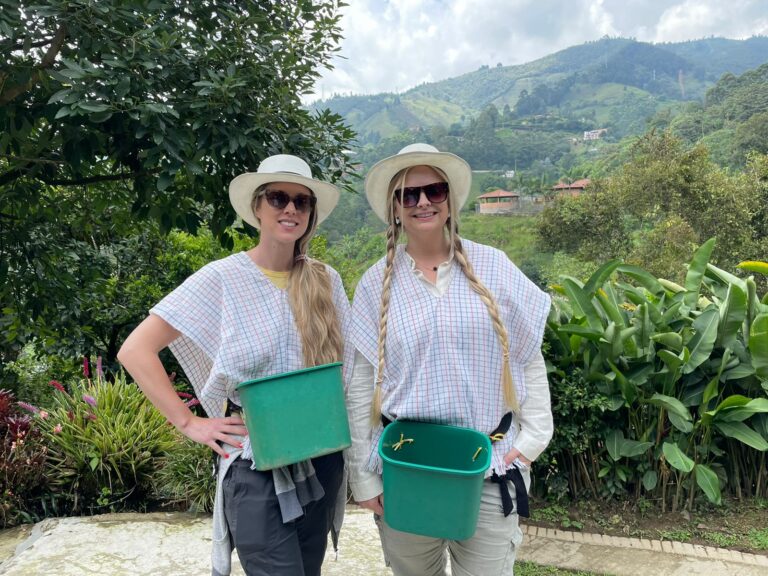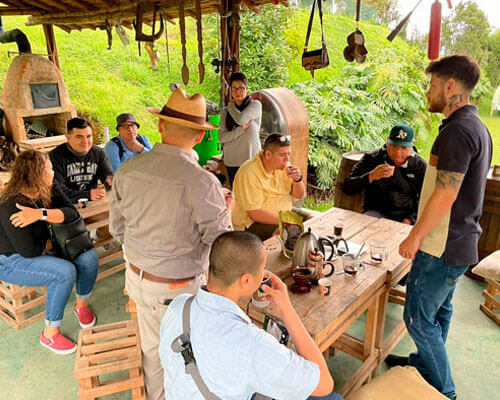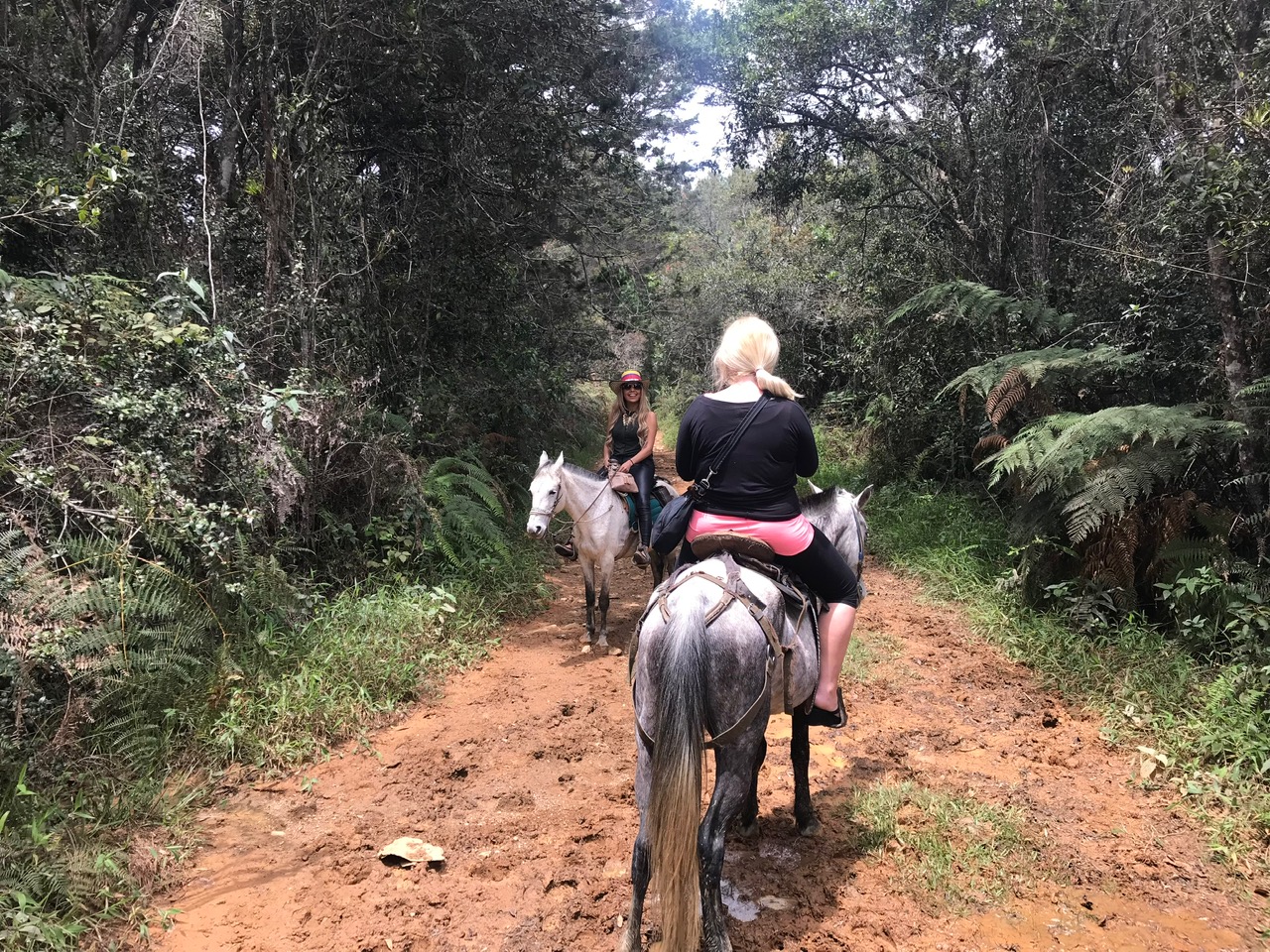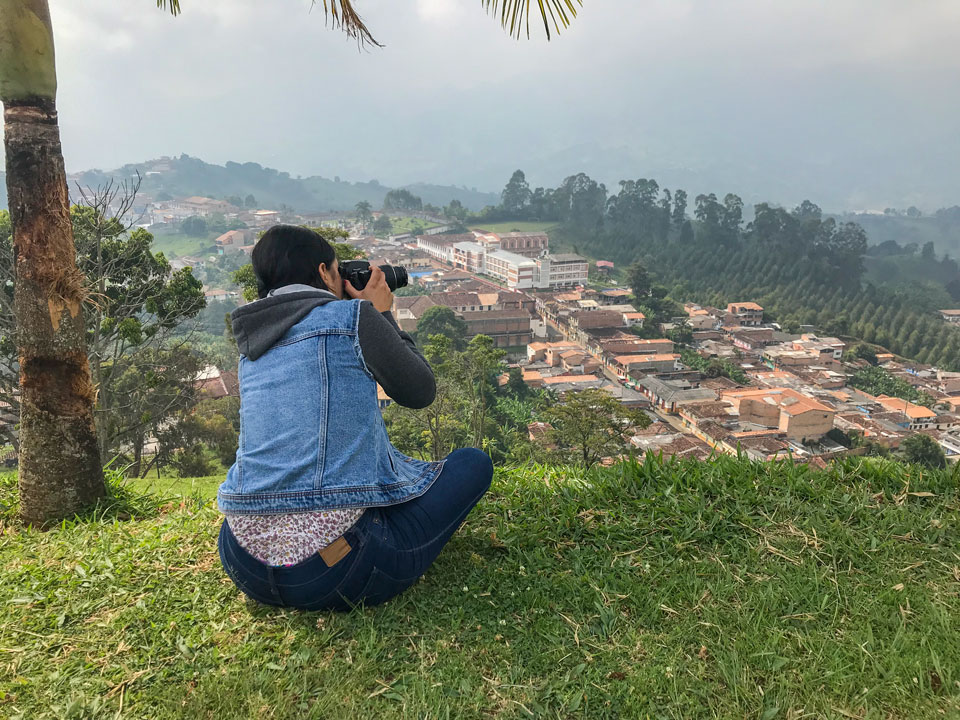TOUR HIGHLIGHTS
╔════════════════════════════════════╗
🚐 Private transportation from Medellín
🌱 Guided visit through a beautiful coffee farm
☕ Learn the process “from bean to cup”
🍫 Taste local coffee & snacks
🗣️ Professional bilingual guide (English/Spanish)
🕒 Half-day or full-day experience
╚════════════════════════════════════╝
TOUR DESCRIPTION
After picking you up at the Airbnb/Hotel on a comfortable and private transportation, we’ll head to the south of Medellín towards the beautiful countryside, just 20 minutes away from the city, we’ll get to see a different perspective, absorbing the vibrant and vivid life around Medellín.
Soon we’ll arrive at a gorgeous little coffee family farm, immersed in natural beauty, full of a diverse range of crops, where we’ll live an authentic coffee experience that will take you through the entire process of coffee-making, from the coffee plant to the cup. Surrounded by the beautiful landscapes of Antioquia, we’ll gain a deeper understanding of the art, complexity and science of coffee. From picking the cherries to roasting the beans, we’ll learn about the hard work and dedication that goes into producing the best and smoothest coffee on earth. In Colombia, coffee is not just a drink, it’s a cultural heritage and a source of pride. We’ll guide you through the fascinating journey of coffee, from the moment it’s picked to the point where it reaches your cup:
PICKING: The journey begins us as coffee pickers carefully selecting only the ripest coffee cherries. These cherries have a deep, rich red color, indicating that they are ready to be harvested. It’s like picking the juiciest fruits from a tree! We’ll use our eyes and fingers to pluck the cherries, making sure to collect the best ones.
DEPULPING: Once the cherries are picked, they need to be processed to extract the coffee beans. This is where the depulping stage comes in. The cherries are fed into a machine that removes the outer skin and flesh, revealing the precious coffee beans inside. It’s like peeling off the protective layer to unveil the hidden treasure within.
WASHING: After depulping, the coffee beans still have some sticky residue on them, called mucilage. To get rid of this, the beans are washed thoroughly with water. This helps to clean and prepare them for the next steps. It’s like giving the beans a refreshing shower to ensure they’re squeaky clean.
FERMENTING: After the coffee cherries have been depulped, they go through a process called fermentation. This step is essential for enhancing the flavors of the coffee beans. The depulped beans, still coated with some of the fruit’s pulp, are placed in fermentation tanks or barrels. Enzymes naturally present in the fruit’s pulp work their magic, breaking down any remaining mucilage and adding complexity to the coffee’s flavor profile. It’s like marinating the beans in a special sauce, allowing them to develop their unique taste characteristics.
DRYING: Now it’s time for the coffee beans to dry out. They are spread out in thin layers on large patios or raised beds to soak up the warm sun. As they dry, the beans gradually lose their moisture content and develop their unique flavors.
THRESHING: Once the beans are dry, they are ready for the threshing process. This involves removing the outer parchment layer that protects the beans. Machines or traditional methods are used to separate the beans from the parchment.
ROASTING: Ah, the final and most exciting step! The green coffee beans are carefully roasted to perfection. This is where the magic happens, as the beans undergo a transformation and release their incredible aromas and flavors. Roasting is an art that requires precise temperature control and expertise. The beans turn from green to brown, and their flavors develop depending on the roast level. It’s like toasting a marshmallow over a campfire, witnessing its color change and savoring the delicious result.

















